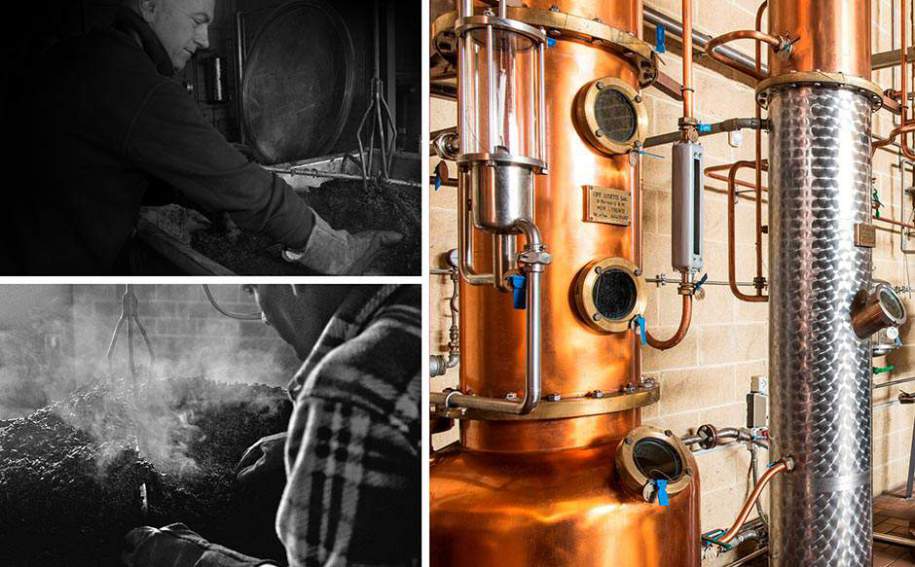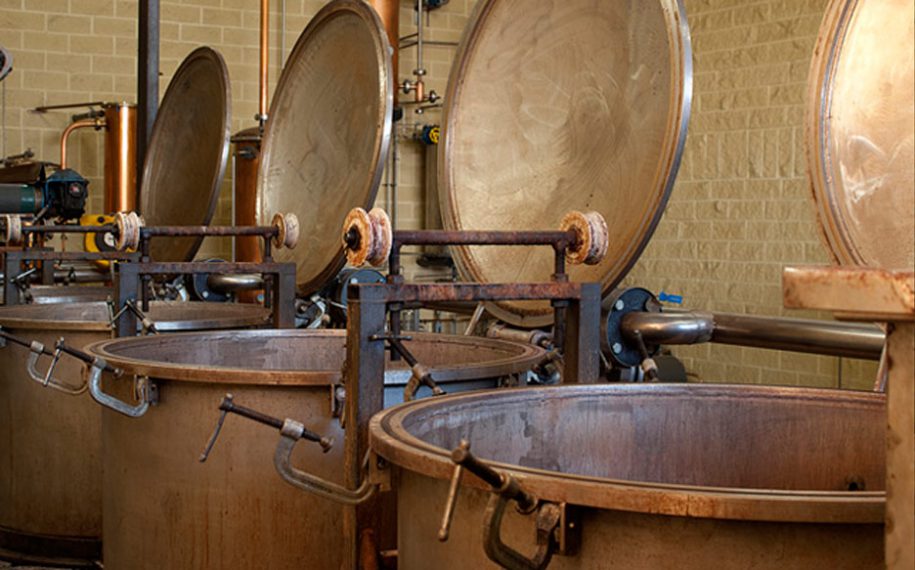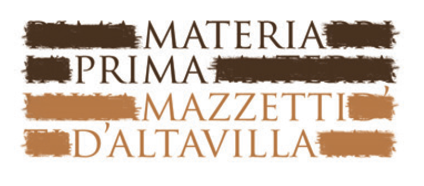Our production process
Distillation, or “distillatio” in Latin, is a process which uses heat to evaporate the volatile parts of a substance at a precise temperature, known as the boiling point, with the subsequent transformation (condensation) of the vapour into liquid.
FUNDAMENTIAL REQUIREMENTS
FOR THE EXCELLENT SUCCESS OF THE PRODUCT
01
THE SELECTION OF RAW MATERIALS
02
THE SHORT DISTILLATION PERIOD
03
THE DISCONTINUOUS DISTILLATION METHOD
In our specific case, we use a vacuum system to remove the air and lower the distillation temperature in order to obtain extremely fine Grappa. By means of a loading auger and conveyor belts, the pomace is conveyed into the stills on special baskets which overlap, the cover is closed and it is slowly heated by steam until the alcoholic part is conveyed into the distilling column.

The two distillation fractions – the heads and the tails – are then discarded by checking the temperature and the alcoholic value on the instruments inside the bell-shaped pot until the moment arrives when the valve needs to be opened in order to collect the best product: the so-called heart of the Grappa. At this point, the Grappa passes through a mechanical measuring device, which is sealed, as indeed the entire system is, by technicians from the Italian Customs and Monopolies Agency, and, through a sampling or assaying device, small portions of the product can be extracted to carry out an initial organoleptic assessment and tasting, which are very important in understanding whether the distillation process has achieved the desired result. The spirit, or distillate, obtained is stored in tanks pending an analysis by the Italian Customs and Monopolies Agency’s Chemical Laboratory which will certify that the legal requirements have been met to place the product on the market.




